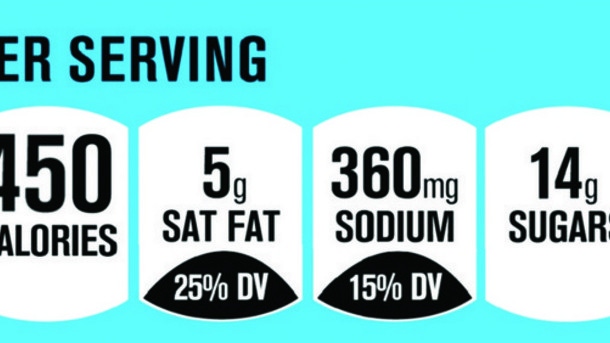New journal article claims effective front-of-package labeling can significantly improve consumers’ ability to comprehend a food’s nutrition information and make informed choices.
April 17, 2014

A Journal of the Academy of Nutrition and Dietetics article co-authored by Marianne Smith Edge, senior vice president for nutrition and food safety communications at the International Food Information Council (IFIC) Foundation, finds that robust front-of-package labeling can significantly improve consumers’ ability to figure out and comprehend a food’s nutrition information, and to make informed choices about their purchases. In addition, more abundant front-of-package labeling reduced consumers’ need to study the Nutrition Facts label.
The article is based on a 2010 study by the IFIC Foundation to examine consumer comprehension, ease of understanding, and interpretation of nutrition information in the uniformly formatted, voluntary front-of-package labeling system that was under consideration by the Grocery Manufacturers Association and the Food Marketing Institute. This research was used to inform the framework for the Facts Up Front program, which is currently being implemented by the two groups.
The study involved 7,363 consumers examining products with four versions of a front-of-package label: 1) a control version with no nutrition information on the front of package, 2) one listing calories only, 3) one listing calories and nutrients to limit, and 4) one listing calories along with nutrients to limit or encourage. However, all participants also were allowed to consult the Nutrition Facts panel. Participants were required to have purchased and consumed, within the past three months, products from both food categories in one of two groups: breakfast cereals and frozen entrees, or salad dressings and savory snacks.
Participants were asked to identify nutrient amounts and percent daily values per serving in products, and to rate the ease of answering those identifying questions. They were then asked which product (one of three in each food category) they perceived was the best choice nutritionally.
In general, the more nutrition information on the front of package, the better consumers were at identifying and comprehending nutritional attributes of the food. Notably, those with the lowest education level (some high school or less) showed proportionately higher gains in identification of nutrients and percent daily values, helping close the gap between those who better understand labels and those of lower education levels.
The survey also pointed to the importance of robust front-of-package information to those with lower incomes. While those with household income under $35,000 comprised 36 percent of survey participants, they comprised nearly half (48 percent) of all those who said they rarely or never used labels for purchasing decisions. Overall, 86 percent of survey respondents said they read a product’s Nutrition Facts label regularly or occasionally when purchasing it for the first time.
Among all respondents, label version 4 generally scored higher than the other versions on measures such as whether the front-of-package information was understandable, if it helped consumers make informed decisions, and whether it was believable and trustworthy. In 26 of 32 such measures across the four food categories, consumers rated version 4 (listing calories and nutrients to limit or encourage) more favorably than versions 2 or 3. (Version 1, having no front-of-package information, was not evaluated for these specific questions.)
In 13 out of 16 measures about nutrition-identifying information across the four food categories, version 4 of the front-of-pack label outpaced the other three versions (including version 1)—sometimes significantly—in the percentage of consumers rating them very easy to use.
One area where greater levels of front-of-package information did not necessarily correlate with understanding, according to the study: “When asked to identify information about nutrients not displayed on the front of package, those viewing versions 1 or 2 largely turned to the Nutrition Facts label for information. However, those viewing version 3, which included calories and nutrients to limit, were less likely to find information about nutrients to encourage. This finding is concerning, because encouraging nutrients and, therefore, foods needed to build a healthful diet, is critical to long-term health. […] A disproportionate focus on nutrients to limit may lead consumers to restrict healthful foods, such as tree nuts and avocado-based products, which are high in fat but provide significant amounts of nutrients to encourage.”
“Our research indicates that a well-designed and widely available front-of-package labeling system can help dietetics professionals provide sound advice and contribute to positive health outcomes, particularly among those with lower education levels,” Smith Edge said. “But to be the most effective, such a system should be accompanied by an education campaign, along with monitoring and evaluation to gauge its real-world impacts.”

You May Also Like


